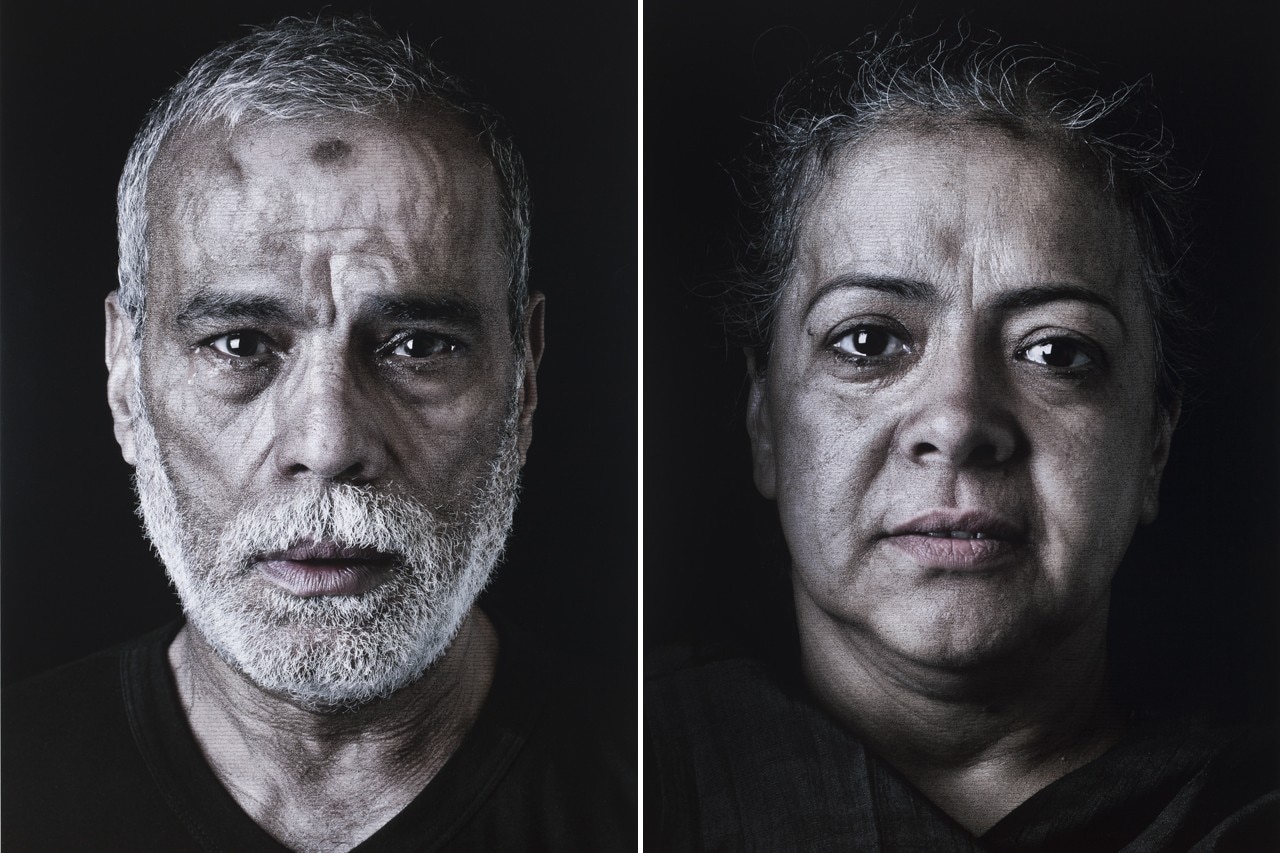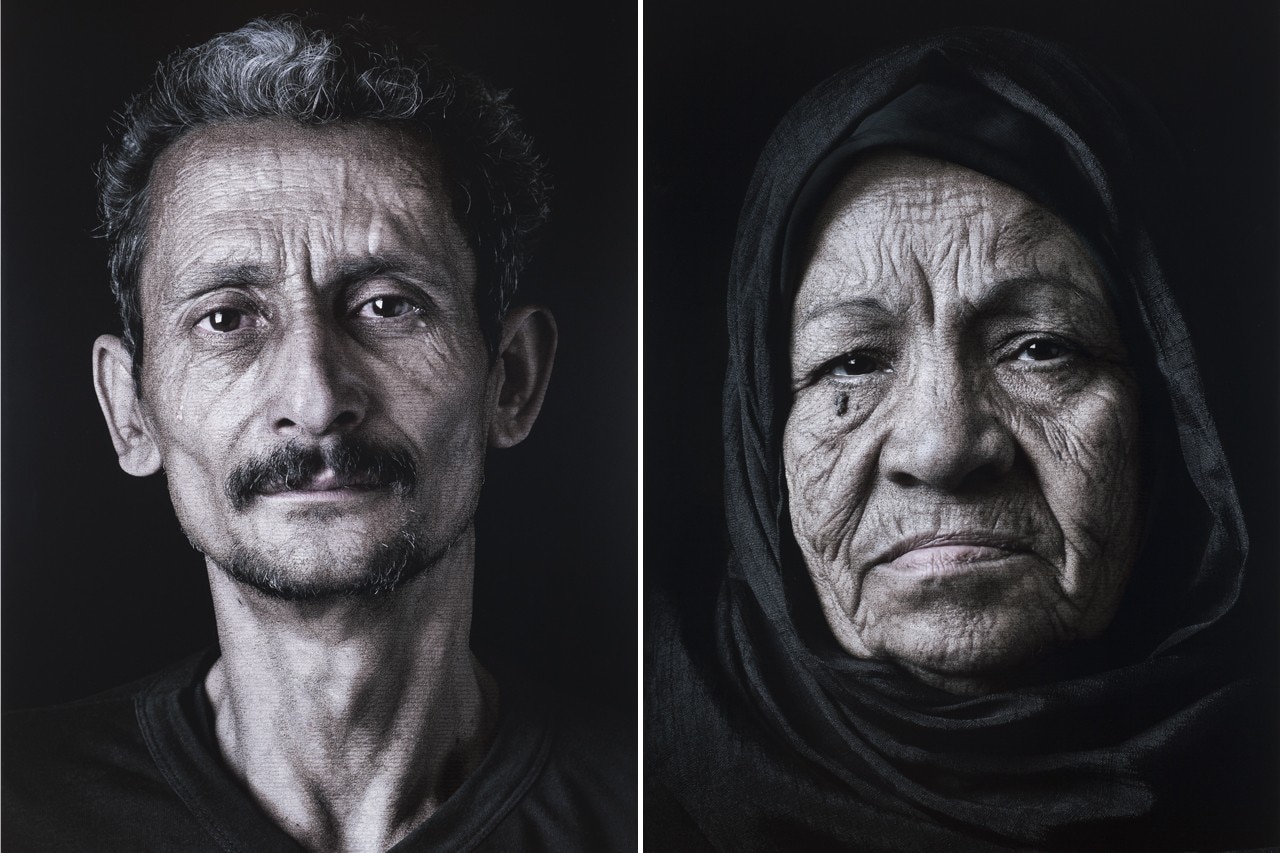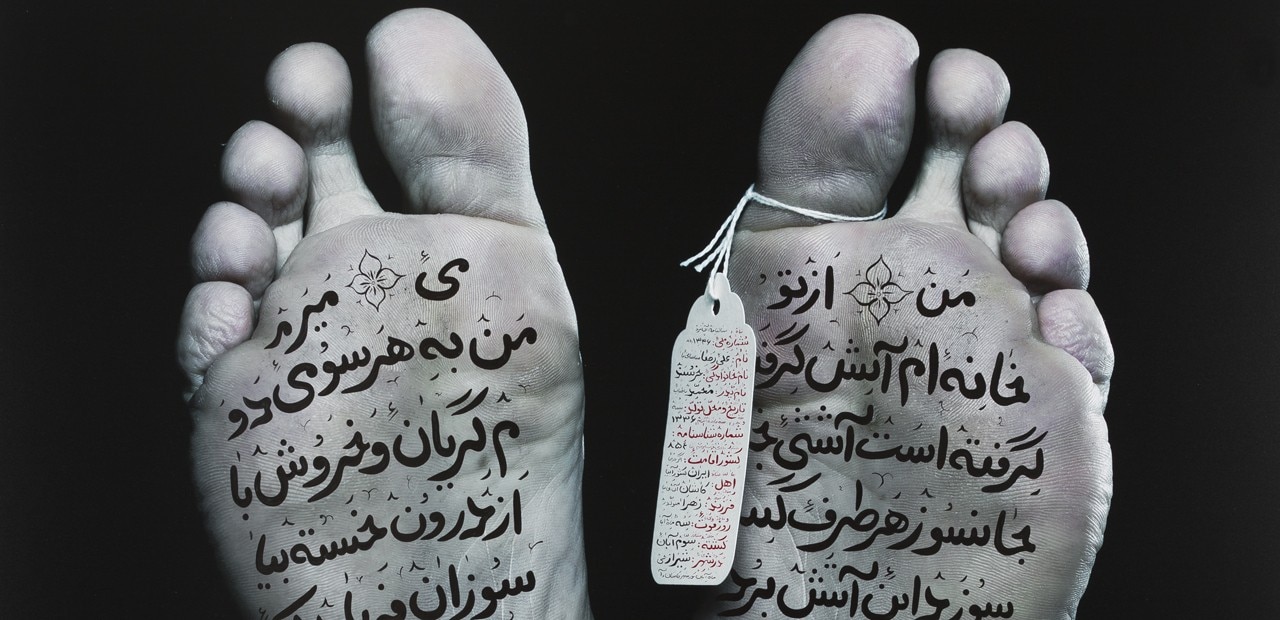Left: Shirin Neshat, Nady, from Our House Is on Fire series, 2013. Digital C-print and ink, 157.8 x 102.2 cm, 160.7 x 102.2 x 5.1 cm framed. Edition EC SN236, location: 515 West 24th Street. Right: Shirin Neshat, Mona, from Our House Is on Fire series, 2013. Digital C-print and ink, 157.8 x 102.2 cm, 160.7 x 102.2 x 5.1 cm framed. Edition EC SN236, location: 515 West 24th Street





